Belgian tech tree for World of Tanks proposal by PikPikker

- ~20 mm
- ~50 hp

The Belgian army purchased some 75 gun-armed versions, slightly modified and locally called FT-18. The engine was modified, giving an extra kph in top speed, and the armor was slightly reinforced. All were still in service by May 1940.
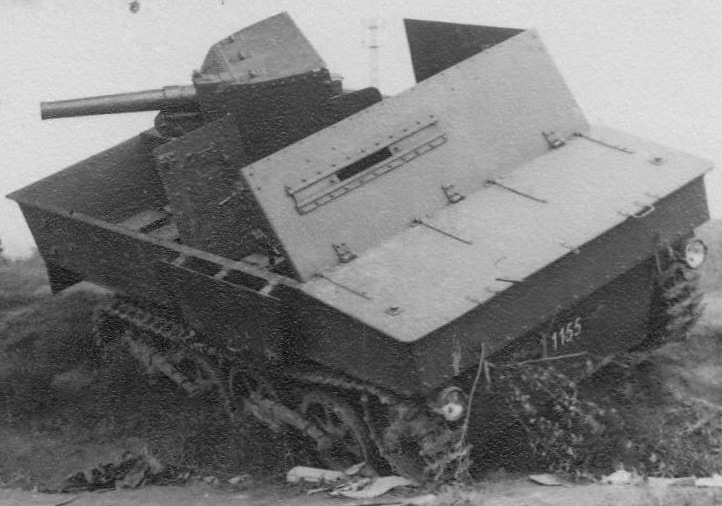
As the T13B1 and B2 are almost the same, I made them different vehicles in the tree marking T13B1 as the version with compartment armored panels raised (120 dg. traverse) and T13B2 with them fold (360 dg. traverse).
- 12/6/- mm
- 12/6/- mm
- 51 hp
Pleased with the performance of the Vickers 1934 artillery truck, the Belgian Army started to equip the newly ordered 32 vehicles with the FRC Herstal built 47 mm Model 1931 anti-tank gun. Since this was a fairly heavy piece of equipment, and because of the general lay-out of the Vickers artillery tractor, with its center of gravity being well halfway the vehicle, the decision was taken to simply install the gun and its turret backwards on the vehicle, so as to keep enough space for crew and ammunition.
After the prototype T-13 B1 passed all the tests of the Belgian Army, in 1935 production on the tank destroyer was authorized to proceed: the Miesse company near Buizingen (close to Brussels) delivered 32 T-13 B1s, all based on imported British built Vickers 1934 artillery tractors. The T-13 B2 model was a further development of the B1, but differs only slightly from the B1 model: most importantly the turret was redesigned to give the vehicle a somewhat lower frontal silhouette. All 21 (23 according to some sources) T-13 B2s were apparently converted from the earlier ordered Vickers artillery tractors for the Chasseurs Ardennais mountain troops, tracked transport of the M34 75mm Bofors mountain gun now passed on to the smaller but more economical Vickers/Familleureux utility tractor. T-13 B2 assembly ended by 1937.
At war, the T-13 was still prone to malfunctions and breakdowns, especially the elderly and underpowered B1 and B2 versions, although the hastily delivered T-13 B3 equipped units - which in some cases had been training on their new equipment for a few days only - had problems as well. For example, the 8th company of the 2nd regiment 'Grenswielrijders/Cyclistes-Frontière' already had a broken down T-13 on the very first day of the Battle of Belgium, and had only four out of 12 left after 8 days of fighting: although some of these were knocked out in battle, at least half of them were lost due to mechanical breakdowns or to Luftwaffe bombing raids. The open topped T-13s were very vulnerable targets in an air attack, and the overwhelming air superiority of the Luftwaffe during the war in western Europe led to high losses. The vehicle was almost as vulnerable to artillery or even light mortar fire.
After the Battle of Belgium ended in German occupation on 28 May 1940, the Wehrmacht took over all usable T-13 vehicles that had not been sabotaged by their crews. They were hastily marked with Balken crosses to distinguish them from enemy units. Apparently, some of these participated in the war with the remaining French army, although it is unclear how many of the T-13s got used in this way. The German designation for this vehicle was "Panzerjaeger VA 802(b)". Most of these vehicles however had very likely never left Belgium, apart from being used for scrap metal later in the war. They were mostly assigned to driver training and target practice, light support duties, airfield security, counter insurgency and possibly as part of the Atlantikwall coastal defenses. However, apart from some photographic evidence, very little is known about the German use of the T-13. A single known surviving T-13 B2 exists at the Brussels Royal Museum of the Army and Military History.
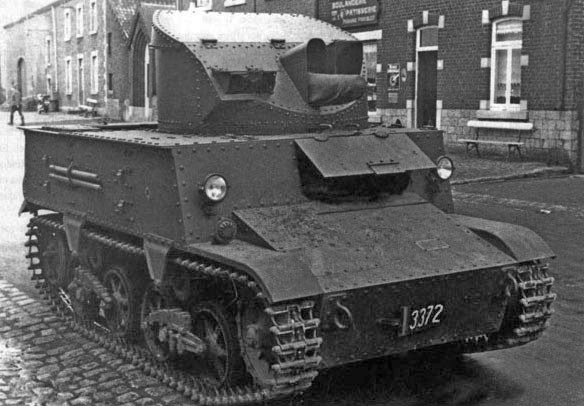

- 13/7/- mm
- 80 hp
- 88 hp
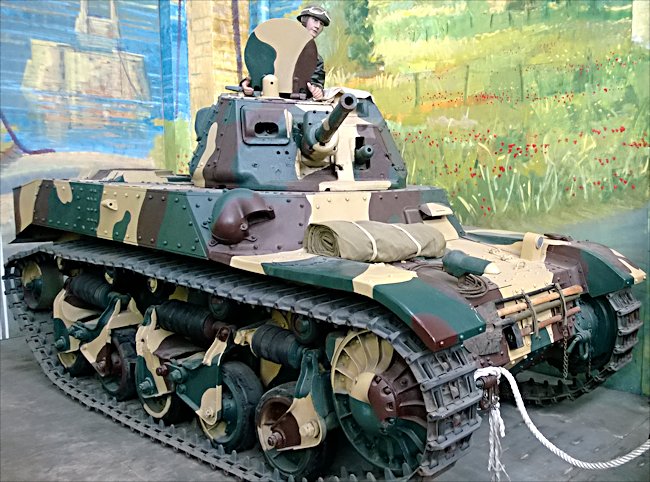
Although the Belgian armed forces were generally very pleased with the capabilities of the existing T-13 B1 and B2s, there were obvious issues with both models of the tank destroyer. So in 1936 a new vehicle was imported from the traditional supplier, the Vickers company - Belgian experiences with ordering from competing foreign companies such as the Renault company had been very disappointing (AMC 35). This was the Vickers-Carden-Loyd Light Dragon Mk. II B in the export version, equipped with a 88 hp Meadows 6 cylinder gasoline engine and a "crash" type gearbox. The general design of the vehicle was almost identical to the T-15 Light tank already in service with the Belgian armed forces, also designed and produced by the Vickers company.
Given the need for the Familleheureux company to set up production after acquiring a Vickers licence in 1936, delivery of the first production T 13 B3s did not commence until 1938. After the second world war broke out in September 1939, production was stepped up so as to equip as many army units as possible with the new tank destroyer. Since acquiring its first T-13 B3s, the Belgian army was finally satisfied with the resultant tank destroyer and kept on ordering. Production of the B3 ended at the start of the Battle of Belgium, after a total of 250 to 255 units were produced by the Familleheureux factory. Together with the earlier B1 and B2 'production', this made, in theory, for a total of 303 to 311 T-13 vehicles. However, a few dozen of these T-13s were still at the factory in the process of being outfitted when war broke out. About two dozen others were on their way to being delivered to new units, but since there was no more time for driver, gunner or maintenance crew training they ended up being used as reserve vehicles for units already equipped with the T-13 or as spare part hulks. In total, it seems that only about 220 T-13 B1/B2/B3s were actually fielded with operational units. Still, this made the T-13 the most numerous armored tracked vehicle in the Belgian armed forces inventory.
At war, the T-13 was still prone to malfunctions and breakdowns, especially the elderly and underpowered B1 and B2 versions, although the hastily delivered T-13 B3 equipped units - which in some cases had been training on their new equipment for a few days only - had problems as well. For example, the 8th company of the 2nd regiment 'Grenswielrijders/Cyclistes-Frontière' already had a broken down T-13 on the very first day of the Battle of Belgium, and had only four out of 12 left after 8 days of fighting: although some of these were knocked out in battle, at least half of them were lost due to mechanical breakdowns or to Luftwaffe bombing raids. The open topped T-13s were very vulnerable targets in an air attack, and the overwhelming air superiority of the Luftwaffe during the war in western Europe led to high losses. The vehicle was almost as vulnerable to artillery or even light mortar fire.
After the Battle of Belgium ended in German occupation on 28 May 1940, the Wehrmacht took over all usable T-13 vehicles that had not been sabotaged by their crews. They were hastily marked with Balken crosses to distinguish them from enemy units. Apparently, some of these participated in the war with the remaining French army, although it is unclear how many of the T-13s got used in this way. The German designation for this vehicle was "Panzerjaeger VA 802(b)". Most of these vehicles however had very likely never left Belgium, apart from being used for scrap metal later in the war. They were mostly assigned to driver training and target practice, light support duties, airfield security, counter insurgency and possibly as part of the Atlantikwall coastal defenses. However, apart from some photographic evidence, very little is known about the German use of the T-13. A single known surviving T-13 B2 exists at the Brussels Royal Museum of the Army and Military History.

- 22.5 hp
Since the Belgian Armed Forces were looking to upgrade their anti-tank capability in the early 1930s, and due to the popularity of the tankette concept, the Carden Loyd Mk VI tankette was chosen as the basis for a first attempt to developing a fully mechanized anti-tank capability. After experimenting with a rather straightforward tractor concept for the Belgian 47 mm Model 1931 anti-tank gun in 1931, a more integrated approach was chosen, resulting in what has probably been the heaviest armed version of the Carden Loyd Mk VI tankette. In 1931, after acquiring six Carden Loyd Mk VI tankettes, two prototype vehicles were modified. One carried the F.R.C. Herstal 47 mm Model 1931 anti-tank gun and one the Canon de 76 FRC, a low-velocity 76 mm infantry gun, in a fixed, forward-facing structure.
The results of the pre-production tests were not convincing: the 76 mm-equipped version experienced a tremendous amount of recoil when firing the gun, resulting in a high pitch movement after firing and a completely unstable gun-laying platform. As a result, the 76 mm prototype was rebuilt into the 47 mm-equipped tank destroyer version. However, the tank destroyer tankette was not deemed satisfactory either: recoil forces from firing the 47 mm anti-tank gun were - albeit less than with the 76 mm version - still too heavy for the 3-ton vehicle; manning the gun with a two-man team was considered too labour-intensive, the ammunition storage was too small; and, apart from the thin armoured frontal shield, the crew was completely exposed. The added weight of the gun also overtaxed the small engine, and wear and tear on the whole vehicle were deemed too high. Nevertheless, the experiment provided some valuable experience for the Belgian army. This culminated in the successful T-13 tank destroyer, whose production started in 1935. The six prototype tank destroyer vehicles were also used operationally.
After being fielded by the elite Chasseurs Ardennais mountain division, the vehicles were deemed next to useless in mountainous areas and quickly passed on to the Cyclistes Frontière/Grenswielrijders, a border guard regiment. They were still in use when the Battle of Belgium started in May 1940, albeit from fixed, ambush positions on the west-bank of the river Meuse (Maas) between Vivegnis and Lixhe. They are known to have fired some rounds on the morning of 10 May 1940, the day of the German invasion.
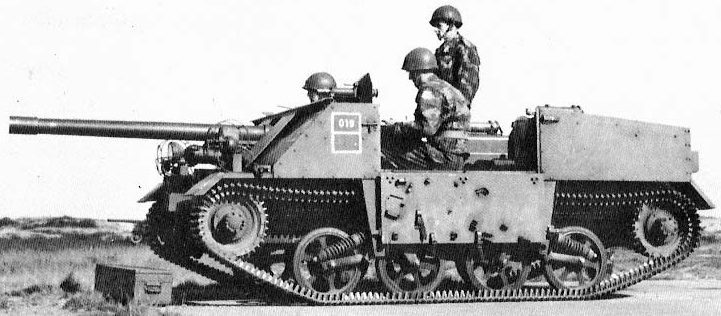
- 85 hp
Trying to find a cheap antitank equipment, Belgian army decided to build a tank destroyer based on the Loyd Carrier. The first prototype of CATI 90 was produced in 1952. Its 90 mm gun could use at least HE and HEAT shells, which could penetrate up to 350 mm of armor at the muzzle velocity of 633 m/s. The vehicle was used in 1954-1962 in infantry units with a paired ammunition carrier. Nowadays CATI 90 can be seen in the military museum in Brussels.


- 9/9/9 mm
- 88 hp

During the motorization program of the Belgian Army, it was decided to buy tracked armored vehicles in order to equip the newly created “Chasseurs Ardennais”. The Vickers-Carden-Loyd Model 1934 (or “4 ton”) tankette was chosen. 42 were ordered (in two batches). The first 18 units were ordered on the 10th of March 1934, and delivered in two lots of 9, in February 1935, on the 15th and 22nd respectively.
The second batch (24 units) was ordered on 16th April 1935 and they were delivered between the November 15 and December 28, 1935. During trials, it was shown these vehicles had the required agility and speed to fulfill the specifications. Belgium, at that time, followed a strict neutrality policy and avoided buying heavier tanks, which could be seen as a provocation by the Third Reich.
Generally similar to the British Light Mk.III. The vehicles were delivered according to the issued specifications, including a special conical turret and no weapons. The FRC (Fonderie Royale de Canons) was given the task of fitting a 13.2 mm (0.52 in) Hotchkiss heavy machine gun (also Vickers machine guns were suggested before), which were initially bought for the Aeronautique Militaire, and were light enough for the tankette.
The T-15s were also involved in some successful counterattacks. In one of these accounts, the 7th 'eskadron pantserwagens'/'escadron voitures blindés', part of the first cavalry division, 2nd regiment Lancers, equipped with both T-13s and T-15s, battled on 12 May 1940 with six German tanks at the small town of Hannuit. Although the 7th had two of its tanks knocked out, it also succeeded in knocking out two German tanks. Another account tells of the successful but ultimately futile counterattack in the town of Knesselare, the day before the Belgian capitulation. The 1st and 4th 'eskadron cyclisten'/'escadron cyclistes' (motorcycle cavalry) of the 1st regiment 'jagers te paard'/'chasseurs sur chevaux' tried to retake the town after a German infantry unit equipped with Pak 36s had infiltrated Knesselare from the east. At 15:00 hours, a group of T-13 and T-15 tanks attacked under the command of colonel Morel, and retook the town, taking 150 German soldiers as prisoners of war. However, later in the evening, after being surrounded and attacked by a much more cautiously operating tank group, the Belgian army had to retreat from Knesselare.
After the battle of Belgium ended, the few surviving T-15s were taken over by the German armed forces under the designation "Panzerspahwagen VCL 701 (b)" (reconnaissance light tank). Since the number of surviving T-15s was small and because the machines were fully imported with only a limited amount of spare parts available, it seems unlikely the German T-15s ever left Belgium. They were likely used for driver training and target practise, light support duties, airfield security, counterinsurgency and possibly as part of the Atlantikwall coastal defences. There are no known surviving vehicles today.
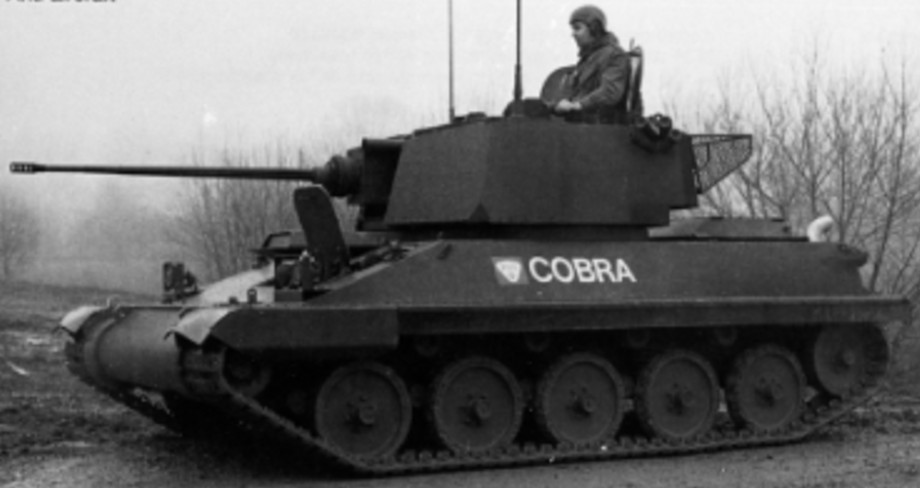
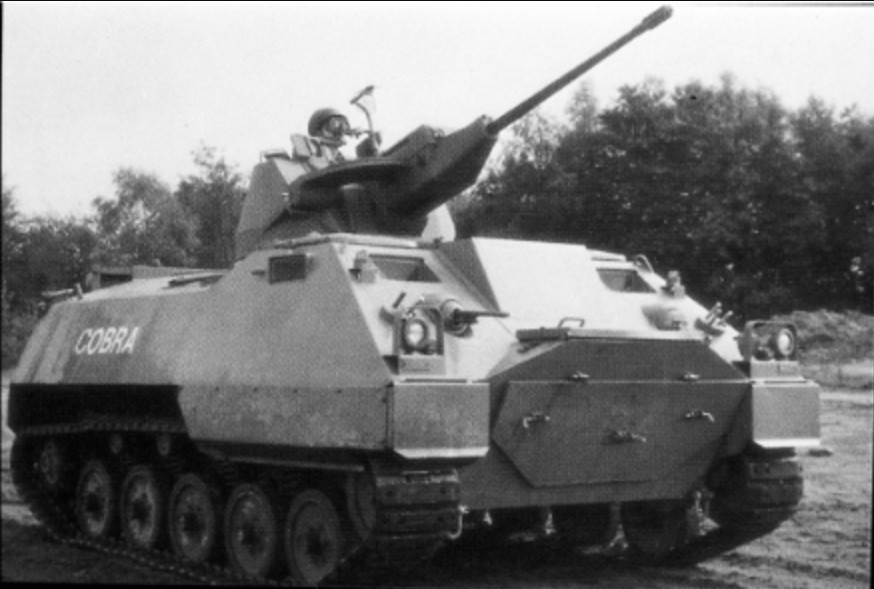
- Bulletproof
- 190 hp

Despite the lack of successful orders for the APC/AFV version of the Cobra, the ACEC Cobra’s powertrain was successful and compact enough to warrant a further attempt to enter the armoured vehicle market, this time in the light tank category, which was developed and built in 1984-1985.
In order to make a tank which was still as small as possible but capable of packing a big punch ACEC redesigned the Cobra hull. This was the final version of the hull produced and involved a complete rearrangement inside although the wheels, track and suspension arrangement remained the same. The single driver was now located centrally where the engine used to be and the engine and motors were moved to the back of the vehicle in a conventional arrangement for an unconventional tank. It still retained the electrical transmission meaning it was still very light and had excellent acceleration but now came in a light tank, and a reconnaissance version.
This very adaptable design too sadly received no orders, so in fact only one vehicle was built.
Notice that this is an amphibious vehicle - that's why it has a special mark in the tree being currently unavailable for the game. But some sources say that such tanks will be introduced into game some time, so it will be possible.
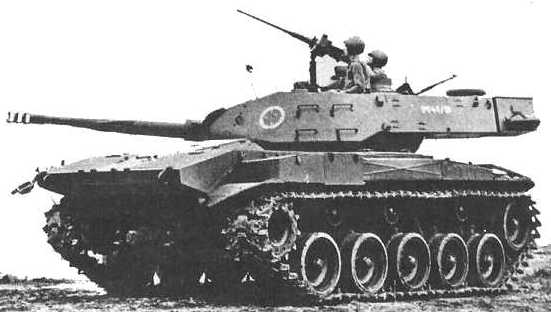
- 32/25/25 mm
- 500 hp
Uruguay embarked on a significant revitalization campaign for its armored corps in 1981, purchasing 20 FN-4RM/62F light armored cars and 22 M41A1 Walker Bulldog tanks from Belgium. The tanks underwent a significant rebuild prior to their export, including the installation of new armor plate by a German contractor, and replacement of the turret armament with a 90mm Cockerill Mk. IV cannon and an FN MAG co-axial machine gun, respectively. These M41s were designated M41A1U and were retrofitted with diesel engines by a Brazilian firm in 1991.
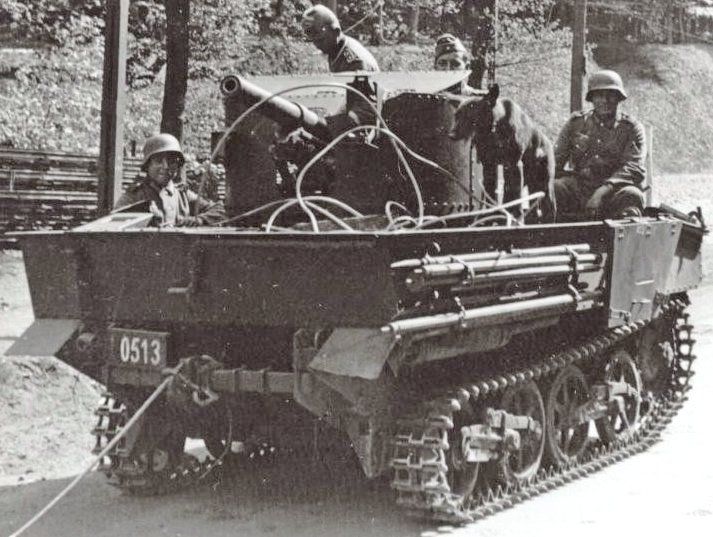
As the T13B1 and B2 are almost the same, I made them different vehicles in the tree marking T13B1 as the version with compartment armored panels raised (120 dg. traverse) and T13B2 with them fold (360 dg. traverse).
- 12/6/- mm
- 51 hp
Pleased with the performance of the Vickers 1934 artillery truck, the Belgian Army started to equip the newly ordered 32 vehicles with the FRC Herstal built 47 mm Model 1931 anti-tank gun. Since this was a fairly heavy piece of equipment, and because of the general lay-out of the Vickers artillery tractor, with its center of gravity being well halfway the vehicle, the decision was taken to simply install the gun and its turret backwards on the vehicle, so as to keep enough space for crew and ammunition.
After the prototype T-13 B1 passed all the tests of the Belgian Army, in 1935 production on the tank destroyer was authorized to proceed: the Miesse company near Buizingen (close to Brussels) delivered 32 T-13 B1s, all based on imported British built Vickers 1934 artillery tractors. The T-13 B2 model was a further development of the B1, but differs only slightly from the B1 model: most importantly the turret was redesigned to give the vehicle a somewhat lower frontal silhouette. All 21 (23 according to some sources) T-13 B2s were apparently converted from the earlier ordered Vickers artillery tractors for the Chasseurs Ardennais mountain troops, tracked transport of the M34 75mm Bofors mountain gun now passed on to the smaller but more economical Vickers/Familleureux utility tractor. T-13 B2 assembly ended by 1937.
At war, the T-13 was still prone to malfunctions and breakdowns, especially the elderly and underpowered B1 and B2 versions, although the hastily delivered T-13 B3 equipped units - which in some cases had been training on their new equipment for a few days only - had problems as well. For example, the 8th company of the 2nd regiment 'Grenswielrijders/Cyclistes-Frontière' already had a broken down T-13 on the very first day of the Battle of Belgium, and had only four out of 12 left after 8 days of fighting: although some of these were knocked out in battle, at least half of them were lost due to mechanical breakdowns or to Luftwaffe bombing raids. The open topped T-13s were very vulnerable targets in an air attack, and the overwhelming air superiority of the Luftwaffe during the war in western Europe led to high losses. The vehicle was almost as vulnerable to artillery or even light mortar fire.
After the Battle of Belgium ended in German occupation on 28 May 1940, the Wehrmacht took over all usable T-13 vehicles that had not been sabotaged by their crews. They were hastily marked with Balken crosses to distinguish them from enemy units. Apparently, some of these participated in the war with the remaining French army, although it is unclear how many of the T-13s got used in this way. The German designation for this vehicle was "Panzerjaeger VA 802(b)". Most of these vehicles however had very likely never left Belgium, apart from being used for scrap metal later in the war. They were mostly assigned to driver training and target practice, light support duties, airfield security, counter insurgency and possibly as part of the Atlantikwall coastal defenses. However, apart from some photographic evidence, very little is known about the German use of the T-13. A single known surviving T-13 B2 exists at the Brussels Royal Museum of the Army and Military History.


- 25/25/25 mm
- 180 hp

The AMC 35 (from Automitrailleuse de Combat Renault modèle 1935), also known under a manufacturer's designation Renault ACG-1, was a French medium cavalry tank of the later Interwar era that served in the Second World War. It was developed as a result of the change of the specification that had led to the design of the AMC 34, calling for a vehicle that was not only well-armed and mobile but also well-armoured. Due to technological and financial problems production was delayed and limited, with Belgium as the only user to create active units with the type.
On 3 June 1937 the Belgian minister of defence, General Henri Denis, demanded that the single prototype be sent to Belgium; it was transported on 4 June. After testing between 23 and 27 August showed that its climbing abilities were poor, the Belgians decided that the seven tanks intended for the Chasseurs Ardennais were unnecessary and reduced the order accordingly to eighteen. The arrival of the prototype had caused a political row however: politicians from the right feared it would antagonise Hitler and so endanger Belgian neutrality; those from the left wanted only purely defensive weapons. As deliveries failed to materialise, in December 1937 it was decided to annul the order completely, to accept a contractual fine of four million franc and to redirect the remaining budget to the production of home-made T-13 tank destroyers.
Series production only started in November 1938 and actual delivery of the first three vehicles to Belgium was delayed till 30 March 1939, the second batch was exported in May and the final three vehicles arrived on 7 August.
In 1938 the turrets also were delivered. As there was now a surplus of fifteen, these were used on fortifications: thirteen of these on coastal defence pillboxes; another two turrets were installed on pillboxes at Remouchamps where a fortress was initially intended to be built, but due to the lack of funds only two casemates were constructed. The turrets were equipped by Belgium with a different armament: instead of the French SA 35 gun, a Belgian FRC 47 mm gun was fitted; this closely related type had a barrel that was 15 mm shorter.[5] Also the machine gun was different: an optionally coaxial 7,65mm rechambered Hotchkiss (Maxim) 08/15 MG. The Belgian turrets were produced at Nantes as the APX2 B, which had the diascope on the left side moved to the facet behind, because the drum magazine for the 7.65mm Maxim 08/15 machine gun made it impossible to look through it in the original position. Older sources incorrectly claim that a 13.2 mm Hotchkiss machine gun was fitted. An armour plate was welded over the hole. They were rebuilt at Ghent by the SEM (Société d'Électricité et de Mécanique Van den Kerckhove & Carels) between September 1939 and February 1940.
Later, these units and other AMCs fought desperately between the 17th and 27th of May. Two apparently experienced breakdowns, and four were destroyed by skillful concentrated fire of German Pak 37 squads. The surviving ones were captured when the Belgian capitulated on May, 28. Their fate is unknown. It is possible that the turrets were sent to the coastal fortifications while the turretless hulls were used for training or converted as schleppers (supply tanks).
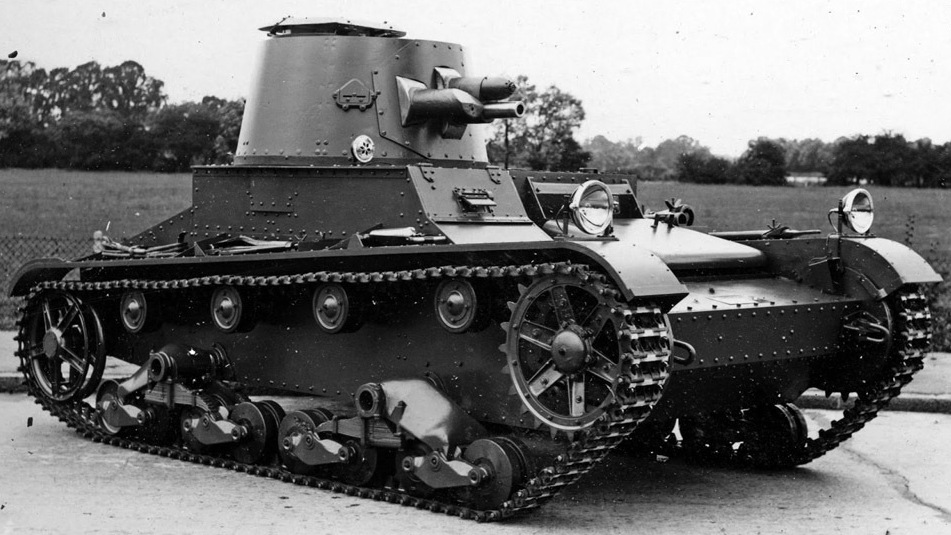
- 12.7/12.7/12.7 mm
- 120 hp
The faults of the Mark E engine made it clear that a new, less overheating engine, and better ventilation systems were needed. This led to a set of modifications including the Rolls-Royce Phantom II engine, which was water cooled and so big that it had to be fitted partly alongside the crew compartment, and the turret was subsequently displaced right aft. This was done mostly to fulfill a request from the Belgian army, but they rejected the prototype after extensive trials. However, the Belgian army adopted the Vickers-based T13. This Mark F was also built for Siam and Finland and became the new standard.

Here's the working initial model of the turret with 90 mm gun. Lower top speed is a bit historically possile as some sources state it this way.

- Bulletproof
- Bulletproof
- 190 hp
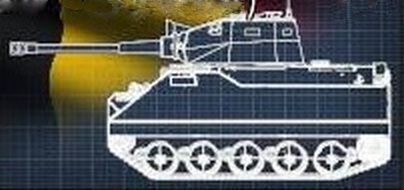
Cobra 90 is the next stage of Cobra 25 (which came from the Cobra APC) built at the same period of time, obviously fitted with 90 mm gun in the new turret.
There were only a couple of other modifications to the ACEC Cobra 90 hull. The original driver’s hatch featured a single large front view port on the hatch which opened in a manner similar to the Soviet T-34 of WW2. This was modified later with additional side view ports on the hatch as can be seen on the surviving vehicle. This hull also had optional side skirts which could be removed too. The turret is sometimes seen with a large spot lamp which could be mounted on either side of the gun. So this prototype version should be without that all looking a way simplier (and being a little bit weaker without sideskirts).
Notice that this is an amphibious vehicle - that's why it has a special mark in the tree being currently unavailable for the game. But some sources say that such tanks will be introduced into game some time, so it will be possible.


- Bulletproof
- 190 hp
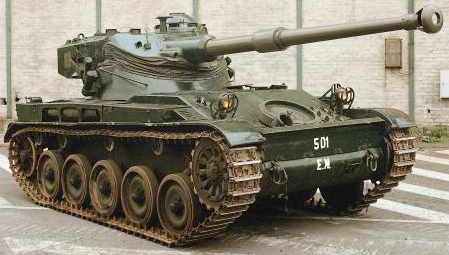
Cobra 90 is the next stage of Cobra 25 (which came from the Cobra APC) built at the same period of time, obviously fitted with 90 mm gun in the new turret.
The ACEC Cobra was a highly innovative vehicle, but nobody showed interest of acquiring it. It is reported to have been shown at an international arms fair in Kuala Lumpur in about 1985 giving an indication as to the potential markets being sought but despite the advantages this design offered over its contemporaries it too failed to secure any orders. The only Cobra tank prototype thankfully survives at the Belgian Tank Museum, Kapellen along with the APC versions, although the 90mm gun has been removed from the tank.
Notice that this is an amphibious vehicle - that's why it has a special mark in the tree being currently unavailable for the game. But some sources say that such tanks will be introduced into game some time, so it will be possible.
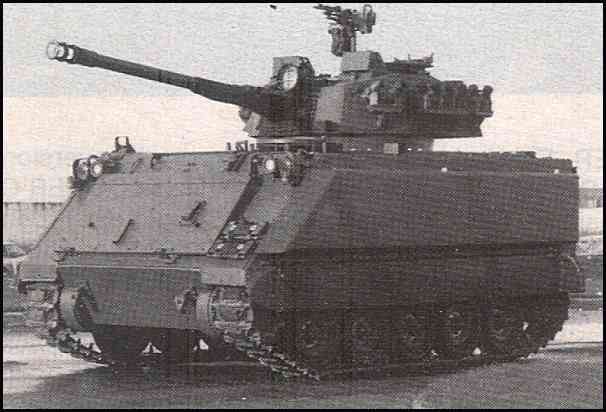
- Bulletproof
- 212 hp
For trials the Cockerill CSE 90LP turret has also been installed on the BAE Systems Land Systems Valkyr (4 × 4), BAE Systems Land Systems Warrior, Steyr-Daimler-Puch Pandur (6 × 6) and an M113A2 APC. Early in 1985, CMI Defence purchased an M113A1-B APC from Belgian Mechanical Fabrication (BMF), which was subsequently fitted with the Cockerill CSE 90LP turret and demonstrated as a fire support vehicle. In this version the vehicle can still carry 10 fully equipped infantry plus its crew of three, the commander, gunner and driver. To enable the vehicle to remain amphibious, flotation panels have been attached to the hull sides. As far as is known, the only production application for the Cockerill CSE 90LP turret is the SIBMAS vehicle.
Notice that this is an amphibious vehicle - that's why it has a special mark in the tree being currently unavailable for the game. But some sources say that such tanks will be introduced into game some time, so it will be possible.


- 12.7/12.7/12.7 mm
- 12.7/12.7/12.7 mm
- 190 hp
- 197 hp

Belgium had about 300 (or even up to 700 vehicles) British Scorpions starting from 1972. Later the modernization with 90 mm Cockerill gun was built for export - mostly for Belgian Army. Seems like not many of them were delivered to Belgium.
Most of the changes occurred in the engine, and external fittings. There were no marks, and export models were very close or identical to the original design. The Irish-based company IED also proposed to modernize the Scorpion fleet using the more powerful Steyr M16 TCA HD engine, and the gun was upgraded to a 90 mm, hence the name, Alvis Scorpion 90. The long-barrelled Cockerill Mk3 M-A1 90mm version was intended first to feed the export market and keep Alvis lines running after the British orders have been delivered.


- 40/20/20 mm
- 250 hp
Cockerill Mechanical Industries offered a 90mm Mk IVA3 re-gunning package for the AMX-13 light tank as a replacement for the existing 75mm or 105mm Main Gun.
The new Main Gun required additional modifications, which were sold with the Mk IVA3 as a package: fume Extractor, a muzzle brake and breech ring accessories; changes to the two six-round ammunition drums, the turret basket ammunition racks and the existing automatic loading system.
A total of 22 packages had been produced for export. This upgrade package- is no longer being marketed by Cockerill Mechanical Industries.
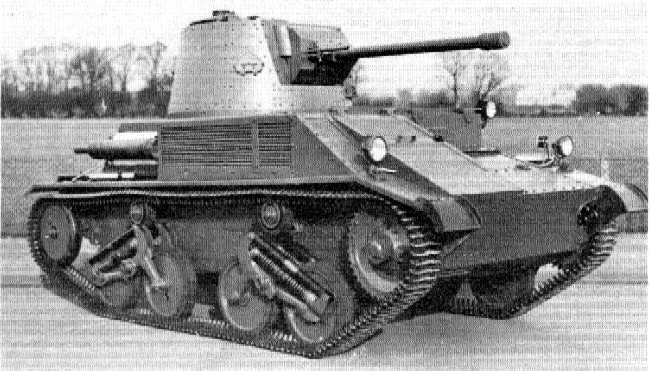
- 9/9/9 mm
- 90 hp
In 1930's Belgian Army had some amount of T15 tanks which were good enough, but their machine guns couldn't be a perfect weapon against enemy tanks. British Vickers offered them M1938 tank with 40 mm powerful gun with antitank abilities. The whole tank was based on the Light Mk.VI but had some slight differences. The tank did well on the tests, but by that time Renault ACG-1 seemed a much better variant (and it really was if compare them two), which Belgian Army ordered then.